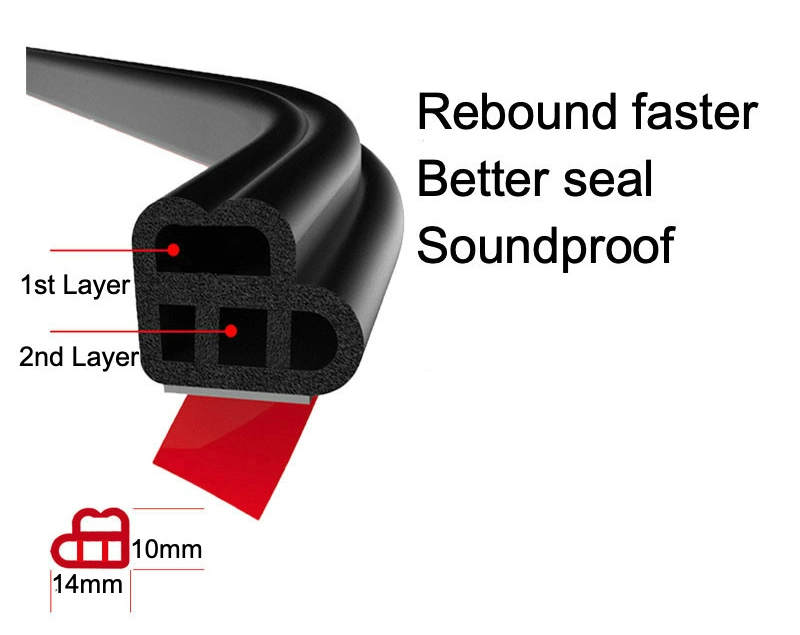fire door rubber seal
The Importance of Fire Door Rubber Seals in Building Safety
In modern building design, safety and compliance with fire regulations are paramount. One critical component that plays a significant role in maintaining the integrity of fire doors is the rubber seal. Fire door rubber seals are essential for creating an effective barrier against smoke and flames, ensuring that occupants have a safe escape route during emergencies while protecting property and reducing potential damage. This article delves into the importance, types, installation, and maintenance of fire door rubber seals.
Understanding Fire Doors and Their Role
Fire doors are specialized doors designed to withstand fire and prevent its spread from one area to another within a building. They are typically constructed from materials that can endure high temperatures and are equipped with various safety features, including intumescent strips and automatic closing mechanisms. However, the effectiveness of a fire door largely depends on the quality and condition of its seals.
The Importance of Rubber Seals
Rubber seals serve multiple functions for fire doors
1. Smoke Containment One of the primary roles of fire door rubber seals is to prevent smoke from penetrating through gaps when a fire occurs. Smoke can travel far more quickly than flames, and inhalation of smoke is one of the leading causes of fatalities in fires. Effective rubber seals can significantly slow down smoke movement, providing critical time for evacuation.
2. Heat Resistance Fire door rubber seals are designed to tolerate high temperatures. When exposed to heat, these seals can expand (especially intumescent seals), filling any gaps and creating a more effective barrier against both smoke and flames.
3. Energy Efficiency Beyond fire safety, rubber seals also contribute to energy efficiency. By providing a tight closure, they help to insulate spaces, reducing heating and cooling costs, and aiding in climate control within buildings.
4. Compliance with Regulations Many building codes and safety regulations stipulate that fire doors must have functioning seals. Installing adequate rubber seals not only enhances safety but also ensures compliance with these codes, potentially avoiding costly fines.
Types of Fire Door Rubber Seals
Various types of rubber seals are available, each catered to different needs
fire door rubber seal

- Intumescent Seals These seals expand when exposed to heat, sealing off gaps to prevent the passage of smoke and flames. They are often used in fire doors as they provide a dynamic response to fire conditions.
- Cold Smoke Seals Specifically designed to prevent smoke from entering through the gaps at the top and sides of doors, these seals maintain their effective function at lower temperatures.
- Compression Seals These seals provide a tight fit between the door and its frame when closed, ensuring no gaps are present that could allow smoke or fire to escape.
Installation of Fire Door Rubber Seals
Proper installation of fire door rubber seals is crucial to their effectiveness. Here are a few essential steps
1. Assess the Door Frame Before installation, it's vital to check the condition of the door and its frame to ensure they are suitable for new seals.
2. Measure and Cut the Seals Measure the height and width of the door frame and cut the rubber seals to size, allowing for slight overlaps.
3. Clean the Surface Before attaching the seals, clean the surface of the door frame to ensure the adhesive or mounting mechanism adheres properly.
4. Secure Seal Installation Adhere the seals to the designated areas using strong adhesive or a suitable mounting technique, ensuring they fit snugly against the door when closed.
Maintenance of Fire Door Rubber Seals
Regular maintenance is key to ensuring that rubber seals remain effective. Building managers should periodically inspect seals for wear, damage, or signs of deterioration. If any damage is found, prompt replacement is necessary to maintain fire safety standards.
In conclusion, fire door rubber seals are vital components of fire doors that significantly enhance safety in buildings. Their ability to contain smoke and heat makes them indispensable for protecting lives and property during a fire emergency. By understanding their importance, types, proper installation, and maintenance, building owners and safety managers can ensure that their facilities are compliant and safe for all occupants. Investing in high-quality fire door rubber seals is not merely a regulatory commitment, but a crucial step towards safeguarding lives in the event of a fire.
Share
-
The Best Lubricants for Aluminum Roller GuidesNewsJul.23,2025
-
Slitting Machine Applications in the Packaging IndustryNewsJul.23,2025
-
Rolling Roller Balancing Techniques for Smooth OperationNewsJul.23,2025
-
How To Optimize An EV Battery Assembly LineNewsJul.23,2025
-
Energy Efficiency in Modern Battery Formation EquipmentNewsJul.23,2025
-
Automation Trends in Pouch Cell Assembly EquipmentNewsJul.23,2025







